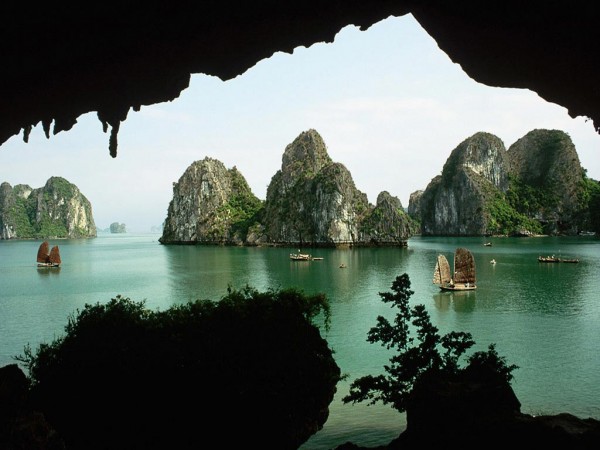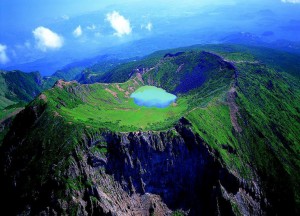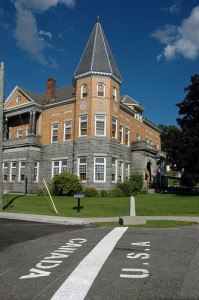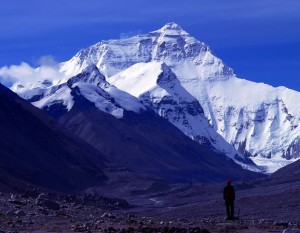Even though we can get to the other side of the world in less than a day, there are still places that resist becoming everyday. Over the centuries they have accumulated tall stories like Manhattan accumulates tall buildings. So pack your compass, reading glasses and imagination for a journey to sites of myth and legend. Here are ten places that are caught in the imagination more tightly than on any map.
Zanzibar, Tanzania
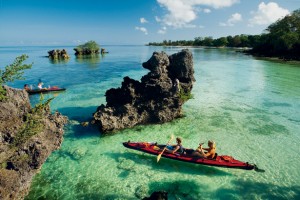
Just the name ‘Zanzibar’ conjures images of harem girls giggling behind gauzy veils, carved wooden doors opening to spice-filled rooms and other images from The Thousand and One Nights. Only in this case, they’re not fiction. Zanzibar grew into a powerful city state between the 12th and 15th centuries, sending ships laden with slaves, gold, ivory and wood to Arabia and beyond. Eventually the Sultan of Oman moved his court here – 100 concubines and eunuchs included – and started Zanzibar’s famous clove plantations. He’s long gone, but an Arabic influence and the scent of sweet spice still lingers over the sultry island.
El Dorado, Colombia
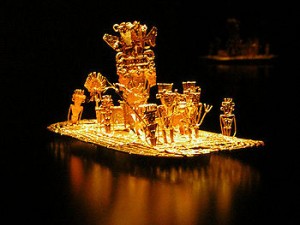
Veiled behind vine-draped trees deep in the Amazon jungle gleams a dazzling kingdom of gold. Or so the story goes. When the Spanish conquistadors caught wind of El Dorado (literally ‘The Golden One’) after washing up on Colombia’s shores in the 1500s, they scattered like frenzied piranhas to find it. They began in the Andean highlands, and whacked through the forests of Peru, Venezuela and Guyana over the next two centuries in their savage quest. No one ever found the fabled city, perhaps because it has the ability to retreat from unworthy seekers.
Valley Of The Kings, Egypt
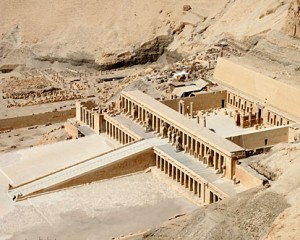
On the west bank of the Nile River, across from the city of Luxor, lies the final resting place of Egypt’s pharaohs. You know the guys – Ramses the Great, Tuthmosis, and the funkiest pharaoh of all, King Tut. They ruled between 1500 and 1000 BC, pooh-poohing pyramids for elaborate tombs carved into the valley’s rocky hills. More than 60 chambers have been unearthed so far, containing mummies in gilt sarcophagi, bejewelled statues and a curse that lands on those who dare disturb the graves. Visitors remain undeterred, as the valley ranks as one of Egypt’s top attractions.
Ys, France
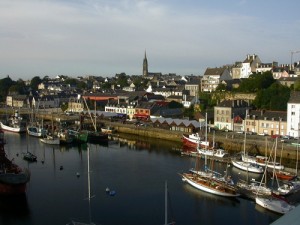
Celtic Princess Dahut asked her dad, King Gradlon, to build her a city by the sea. Ys sprung up, and to protect it from the high waves, the king built a dyke around it. The sole entrance was through a brass gate, and only Gradlon had the key. Meanwhile Dahut, taking advantage of her new digs, chose a different lover every night and had him killed afterward. Eventually a demon outwitted her, persuaded her to steal the key, and opened the gate. Ys flooded, and everyone drowned except Gradlon. The ruined city lies beneath the bay at Douarnenez, now a popular beach town in Brittany.
Troy, Turkey
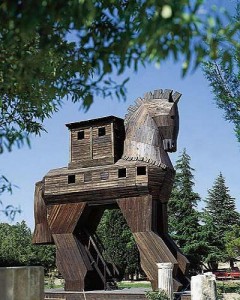
Fans of mythology will recognise Troy as the old stomping grounds of folks like Hector, Paris and Helen, as well as one giant wooden horse. The city was ground zero for the Trojan War, sparked when Paris kidnapped Helen from her kingly husband in Greece. The Greeks ganged up and sailed straight over to Troy, determined to kick ass. And they did, especially after Odysseus Trojan Horse idea. Modern-day visitors can tromp around the walls, temples and ruins at the area, also known as Truva, in Turkey’s northwest corner.
Karakorum, Mongolia
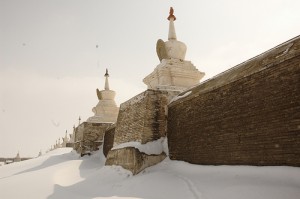
Genghis Khan set up house here in the mid-13th century, then headed out to conquer half the world. Karakorum was his Mongol capital and became known as the Empire of the Steppe. Alas, the glory didn’t last long – about 30 years, in fact – and then the city was destroyed. Current visitors will need to muster serious imagination to envisage the great walls and gates that once encircled the place. Many bits were incorporated into the nearby Erdene Zuu monastery’s long white walls and 108 stupas.
Carthage, Tunisia
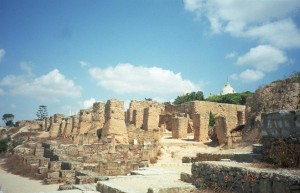
Located on the outskirts of modern Tunis, Carthage was a city-state superpower and the archenemy of Rome during the 3rd century BC. Its might came from a killer navy of Phoenician ships that patrolled the Mediterranean Sea, and an army of elephants that marched over mountains with a military commander named Hannibal. Despite being dubbed ‘the shining city’, Carthage couldn’t hold on for long. The Romans stormed in and razed it, ultimately building their own city on the site. It’s their baths, houses, cisterns and basilicas that visitors see today.
Timbuktu, Mali
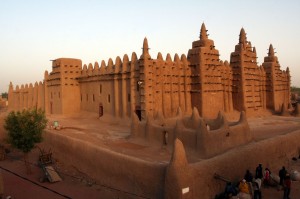
A byword for ‘place that’s way the hell out there’, Timbuktu earned its reputation early on as the terminus of a rich trade route linking West Africa and the Mediterranean. All you had to do to get your gold, slaves and ivory north (or salt to come south) was join a camel caravan and plod for months across the Sahara through sandstorms, blazing heat and insanity-inducing isolation. It’s still a mighty trek to reach Timbuktu, and though salt caravans continue to pass through led by blue-clad Tuaregs, the city only hints at its 15th-century grandeur of wealthy merchants and mosques.
Avalon, England
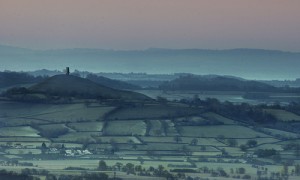
King Arthur rests on the enchanted isle of Avalon, sleeping off the wounds accrued during a lifetime of knights, crusades, sorcerers, Round Tables and magical swords. As Britain’s ‘once and future king’, it is said he will return wielding Excalibur and the Holy Grail to unite his country when it needs him most. Today the modern town of Glastonbury spreads over the site where Avalon once floated. True to its mystic roots, it attracts free spirits who come to buy crystals, consult with psychics, lick vegan ice-cream cones or attend crop-circle symposiums.
Shambhala, Tibet
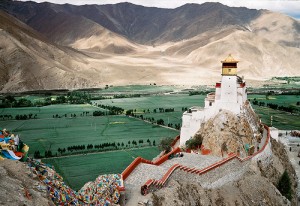
The kingdom of Shambhala hides somewhere deep within the snow-stained peaks of the Himalayas. An enlightened, peaceful ‘Pure Land’ of Buddhist lore, it can be reached only by individuals who have racked up the appropriate karma. Explorers in the past century have set out to find Shambhala in Tibet, which is also where James Hilton placed it in his novel Lost Horizon (under the name of Shangri-la). Since no one has yet discovered the kingdom, perhaps the next best thing is the town of Zhongdian on the China–Tibet border. It was renamed Shangri-la in 2001, claiming to be the place’s inspiration.
21 Feb 2011
http://www.lonelyplanet.com/tunisia/travel-tips-and-articles/76509
Average Rating: 4.9 out of 5 based on 269 user reviews.
 The other four crowned the world’s natural wonders are South Korea’s Jeju Island, Indonesia’s Komodo, the Philippines’ Puerto Princesa Underground River and South Africa’s Table Mountain, said the New7Wonders foundation, citing provisional results.
The other four crowned the world’s natural wonders are South Korea’s Jeju Island, Indonesia’s Komodo, the Philippines’ Puerto Princesa Underground River and South Africa’s Table Mountain, said the New7Wonders foundation, citing provisional results.